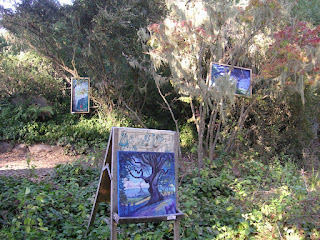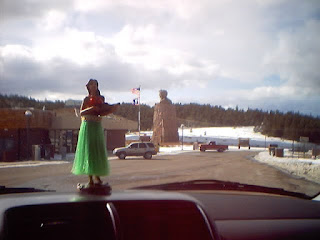 wrack
wrack
Usually, this beach is totally clear of debris with the softest sand around (the kind that squeaks beneath your feet). Asilomar is located on the ocean side of the peninsula and is often very windy and chilly; this is why we rarely stop to get our toes sandy or wet. However, the surfers in their wetsuits don't seem to mind.
I had an epiphany about the seasonal nature of the ocean and beaches while figuring out how to write this blog post. I liken the wrack as an oceanic version of the fall of the leaves back east and elsewhere in the northern hemisphere (see my list o' links of autumn leaf colors). This past Thursday morning, I noticed the sound of the waves crashing, even though we've been experiencing very warm, non-stormy weather. Yep, I know, we live less than a block away from the Monterey Bay and you would think we always hear the ocean waves... but, we don't. In fact, for most of this summer it was very calm and quiet, hence why the constant crashing noise that started last week stands out. I had always assumed the sudden appearance of wrack had to do with storms, and yet there are no storms in sight. I've been trying to look into why we have bigger waves right now, but I haven't found much online information.
ps 10/07/10 - For added reference, Wednesday, September 22, 2010 at 8:09pm PDT marked the autumnal equinox. Also, September's full moon hit its peak Thursday, September 23, 2010 at 2:17am PDT. Not only is this a harvest moon, it's a super harvest moon because of the timing all in the same night. For more information, see bigsurkate's blog post or National Geographic's daily news.
pss 10/22/10 - For a nice blog post in a similar vein as this one, read Bread on the Water.
pss 07/31/11 - While doing another post, I discovered there are actually 2 species of Phyllospadix found locally: P. torreyi and P. scouleri. There is no way I can tell the difference. I've made the changes in the embedded links. Also as a personal choice, I've decided to keep the seagrass family name of Zosteraceae, rather than list the surfgrass under the pondweed family name of Potamogetonaceae.
pss 09/22/11 - It's that time of year again. The sound of the waves woke me up. Again, no storm in sight. We've actually had very sunny days since 09/12/11. Before that it had been the usual summer coastal fog. I noticed the waves were louder sometime last week. I'm still wondering where to go to look up information about the seasonal changes of the ocean.
I had an epiphany about the seasonal nature of the ocean and beaches while figuring out how to write this blog post. I liken the wrack as an oceanic version of the fall of the leaves back east and elsewhere in the northern hemisphere (see my list o' links of autumn leaf colors). This past Thursday morning, I noticed the sound of the waves crashing, even though we've been experiencing very warm, non-stormy weather. Yep, I know, we live less than a block away from the Monterey Bay and you would think we always hear the ocean waves... but, we don't. In fact, for most of this summer it was very calm and quiet, hence why the constant crashing noise that started last week stands out. I had always assumed the sudden appearance of wrack had to do with storms, and yet there are no storms in sight. I've been trying to look into why we have bigger waves right now, but I haven't found much online information.
ps 10/07/10 - For added reference, Wednesday, September 22, 2010 at 8:09pm PDT marked the autumnal equinox. Also, September's full moon hit its peak Thursday, September 23, 2010 at 2:17am PDT. Not only is this a harvest moon, it's a super harvest moon because of the timing all in the same night. For more information, see bigsurkate's blog post or National Geographic's daily news.
pss 10/22/10 - For a nice blog post in a similar vein as this one, read Bread on the Water.
pss 07/31/11 - While doing another post, I discovered there are actually 2 species of Phyllospadix found locally: P. torreyi and P. scouleri. There is no way I can tell the difference. I've made the changes in the embedded links. Also as a personal choice, I've decided to keep the seagrass family name of Zosteraceae, rather than list the surfgrass under the pondweed family name of Potamogetonaceae.
pss 09/22/11 - It's that time of year again. The sound of the waves woke me up. Again, no storm in sight. We've actually had very sunny days since 09/12/11. Before that it had been the usual summer coastal fog. I noticed the waves were louder sometime last week. I'm still wondering where to go to look up information about the seasonal changes of the ocean.




























